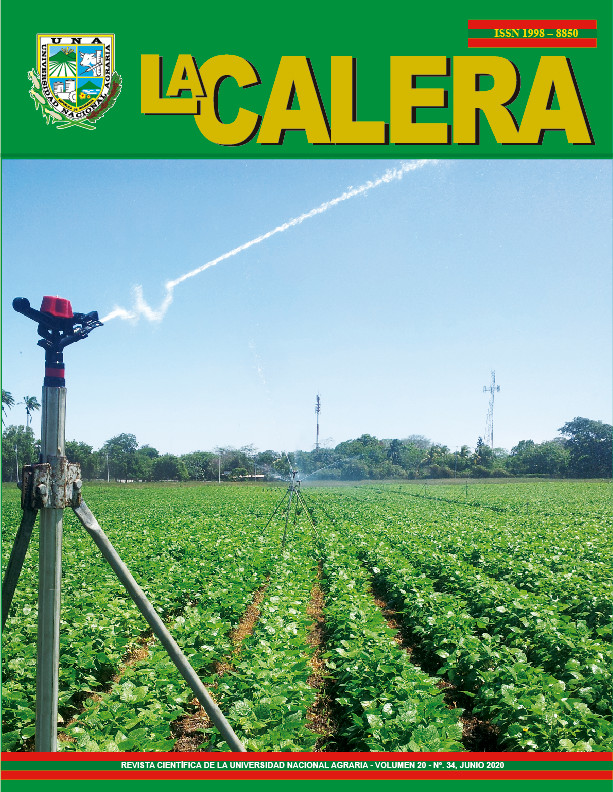Irrigation in tomato cultivars (Solanum lycopersicum L.), Universidad Nacional Agraria, Managua, Nicaragua
DOI:
https://doi.org/10.5377/calera.v20i34.9811Keywords:
Polar and equatorial diameter, efficient use of water, yield coefficient, uniformity coefficient, cultivarsAbstract
Tomato (Solanum lycopersicum L.) is an important vegetable in Nicaragua for its consumption and marketing. In Nicaragua, the cultivation of tomato began in 1940, and currently the yields vary between 12 and 18 t ha-1. Due to the constant changes in the rain regime, technologies have been developed that allow efficient use of water, such as drip irrigation. The objective of this research was to study three irrigation sheets (T1=1.5, T2= 2.0 and T3= 2.5 liters plant-1 day-1) in three tomato cultivars (Shanty, UC-82 and Butero) in soils conditions of Managua, Nicaragua. The trial was setted up in a Full Random Block (BCA) design with stripe arrangement. The variables were subjected to an analysis of variance and separation of means by minimum significant differences with p=0.05. Polar diameter, equatorial diameter, and volume were significantly affected by the two independent factors. In the yield variable, statistical differences were found in the factor of irrigation sheets, with higher averages of 2.0 liters plant-1 day-1 (11 875 kg ha-1) and 2.5 liters plant-1 day-1 (10 970 kg ha-1). The cultivars that presented the highest averages were Shanty (11 805 kg ha-1) and Butero with 10 945 kg ha-1. The irrigation sheet of 1.5 liters plant-1 day-1 presented the highest loss with a cultivation coefficient of 3.17 like the cultivar Shanty (3.28); the calculated uniformity coefficient was 98.28% classified as excellent.
Downloads
1268
HTML (Español (España)) 529
EPUB (Español (España)) 228
XML (Español (España)) 209

